THE HANOI TIMES — Tu Van Village has long been known for its traditional weaving and embroidery, especially making flags on the eve of Vietnam’s August Revolution in 1945.
On September 2, 1945, in a sea of people and a forest of fluttering flags at Ba Dinh Square , the craftsmanship of Tu Van quietly went into history. Among the proud crowd witnessing the birth of a new Vietnam were flags sewn by the skilled hands of Tu Van villagers.
Since that monumental day, Tu Van has continued this honor. Generation after generation, families in the village have passed down the tradition that some now in their fourth generation of making national flags.
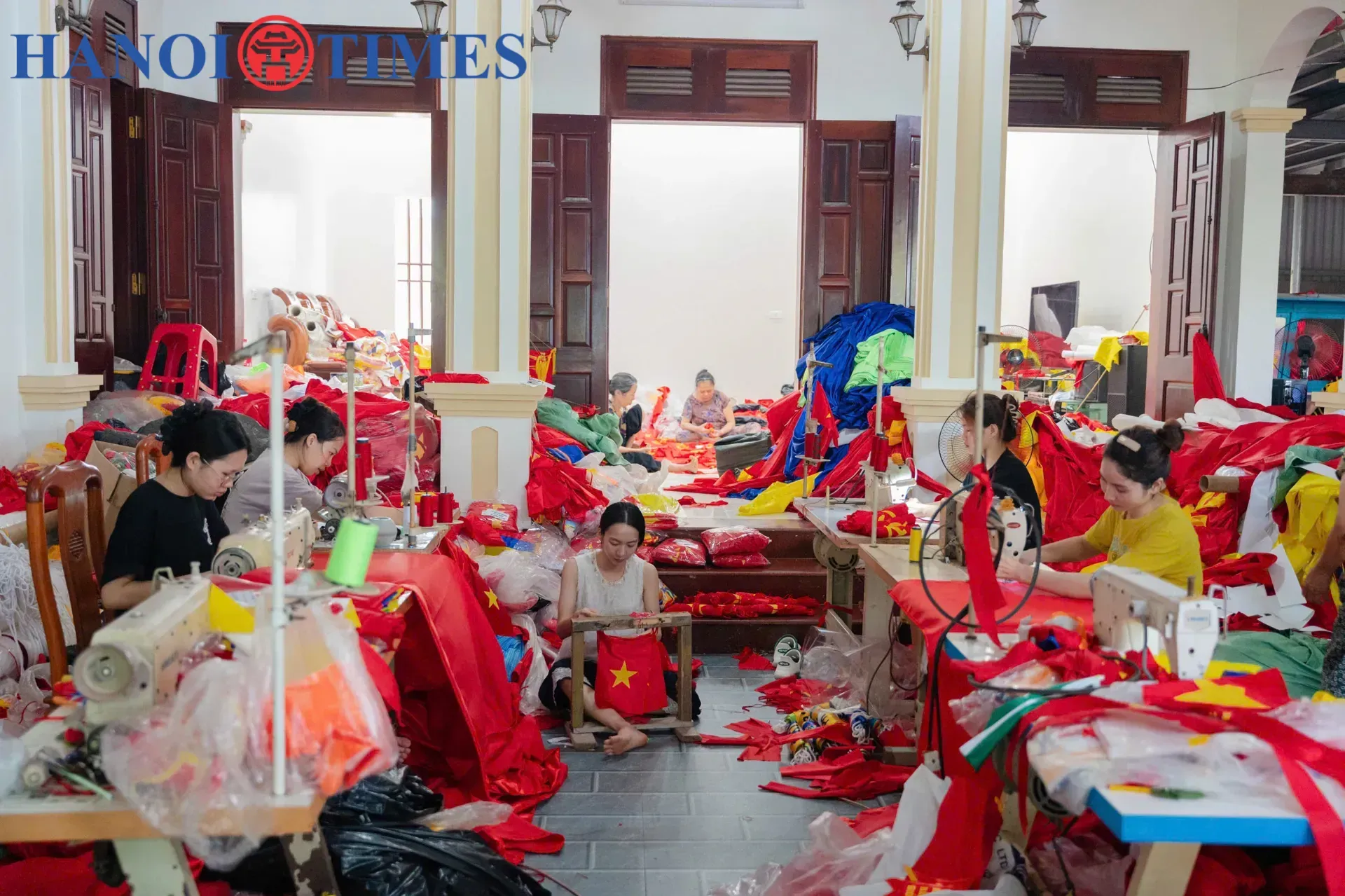
As the Vietnam National Day (September 2) approaches each year, Tu Van enters its most vibrant season that known locally as the “flag season.” Photos: Duy Khanh/The Hanoi Times
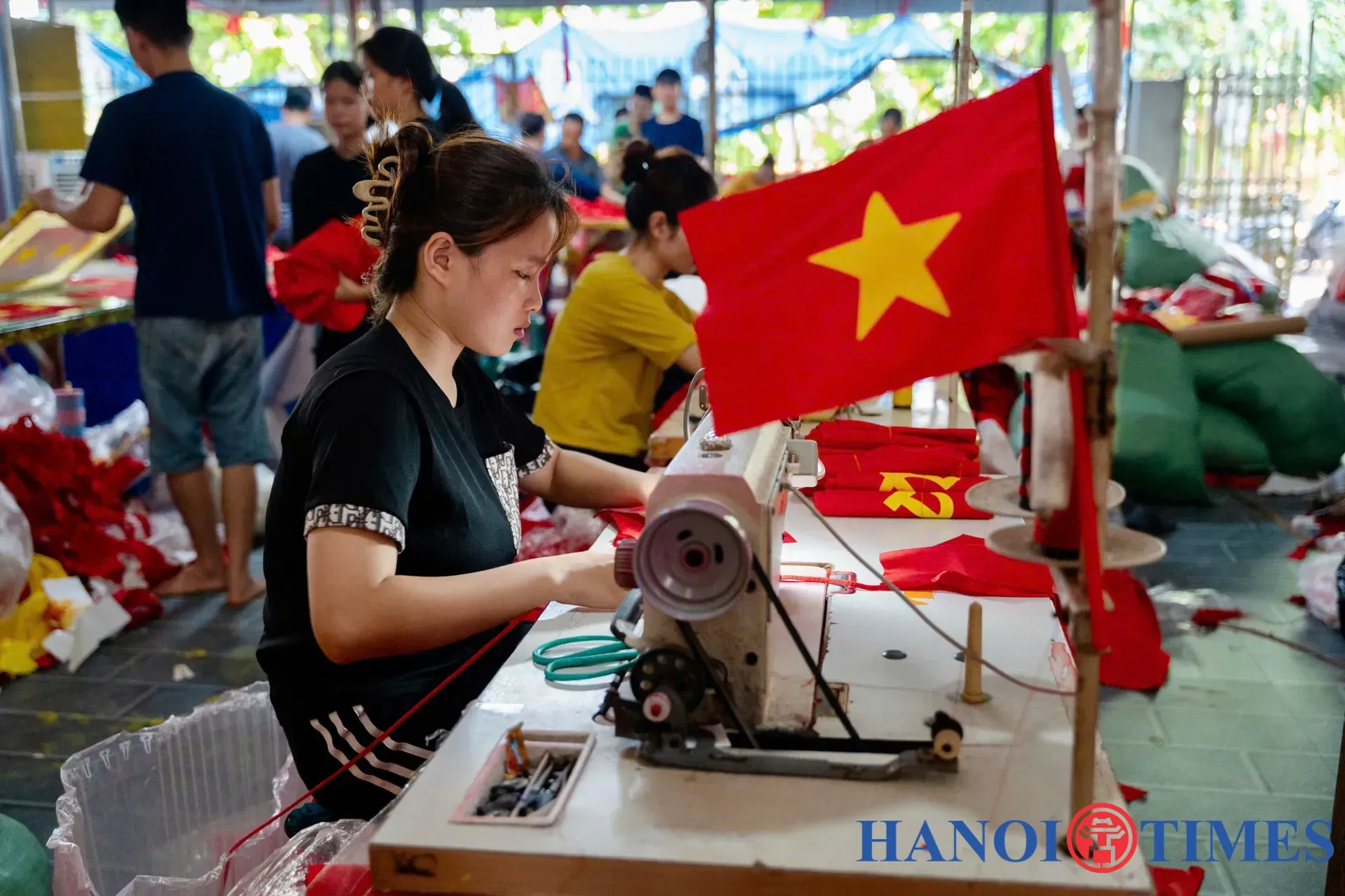
From the early morning, the rhythmic hum of sewing machines and the steady hands of tailors fill the air.
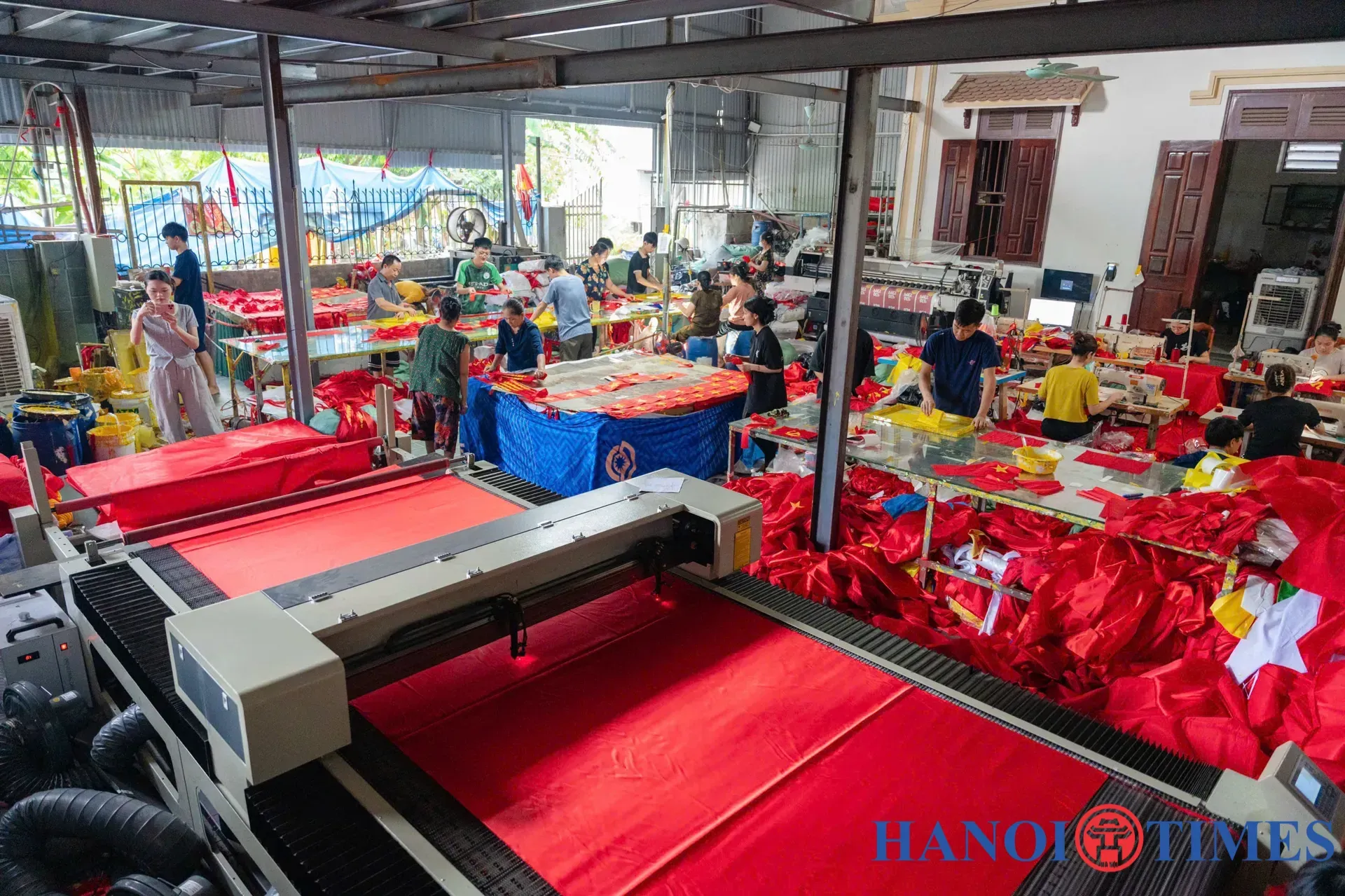
The village bustles with a purposeful energy, blending tradition with modernity.

Tu Van resident Nguyen Van Phuc said that for villagers, every flag is a symbol of national pride.
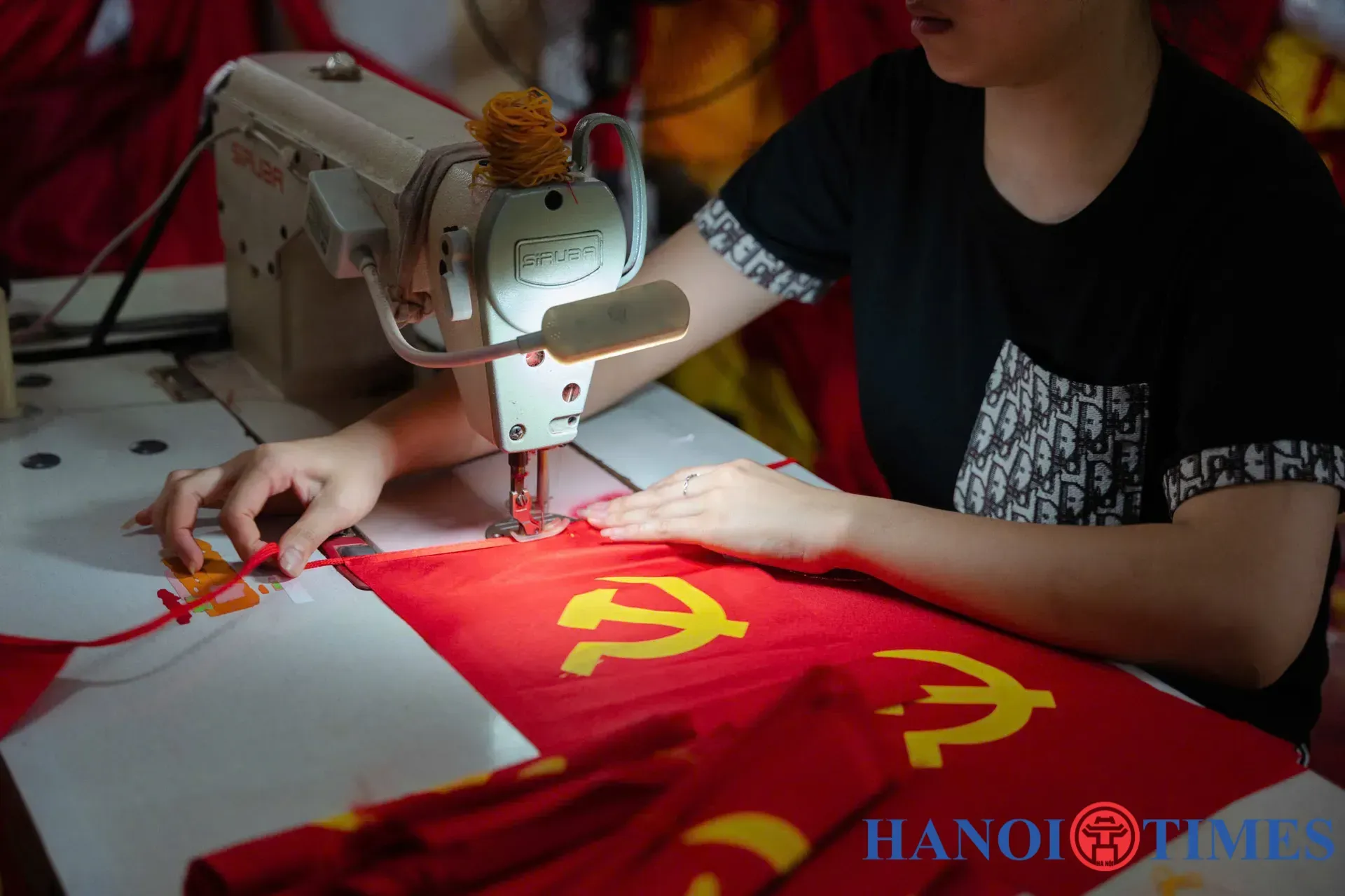
Each flag is made by the patience and skill of the artisans.
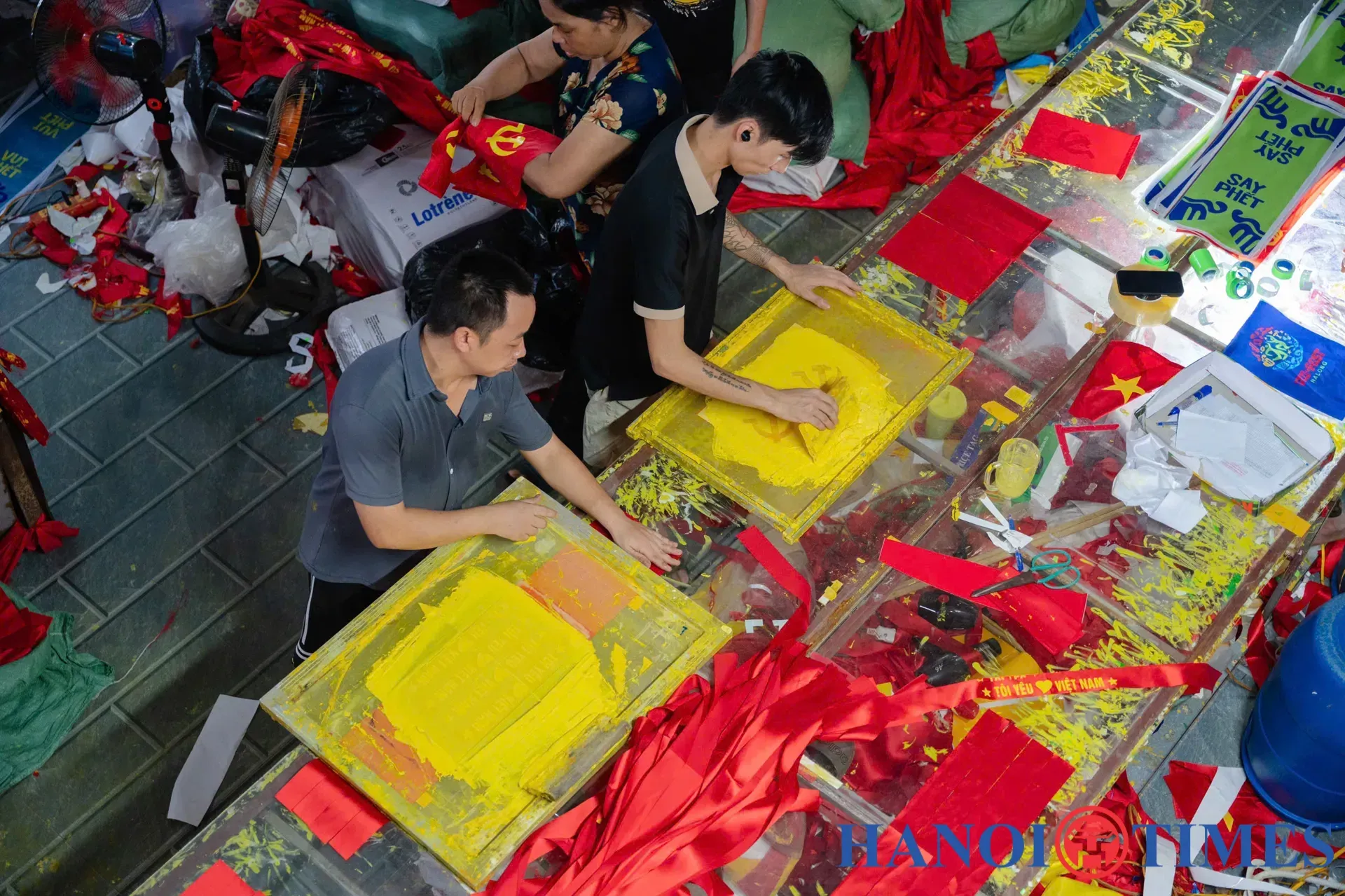
Currently, large-scale production facilities in Tu Van are equipped with modern machinery system, making most of the stages automated.
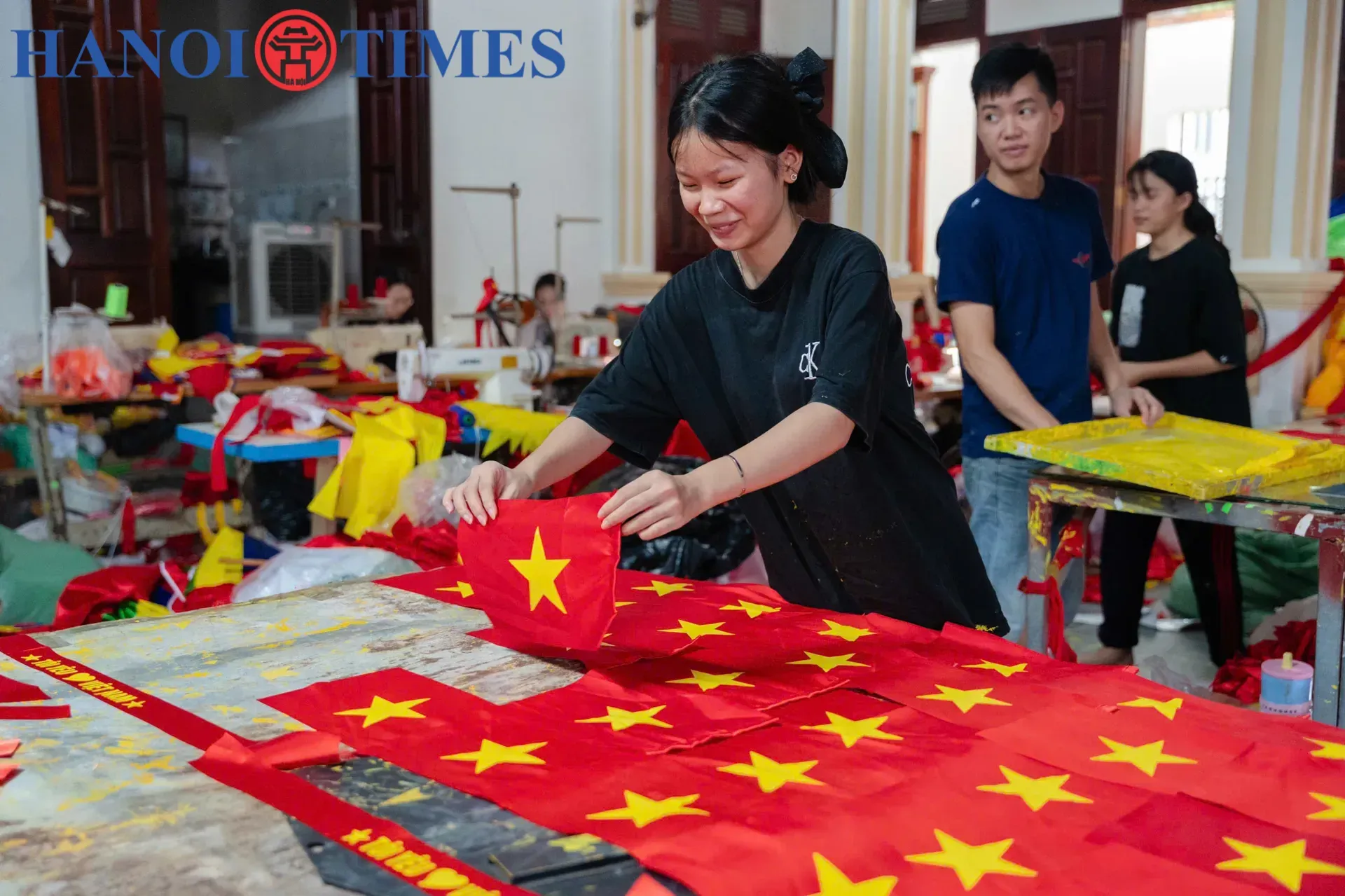
Younger generations are trained to ensure that the tradition is preserved.
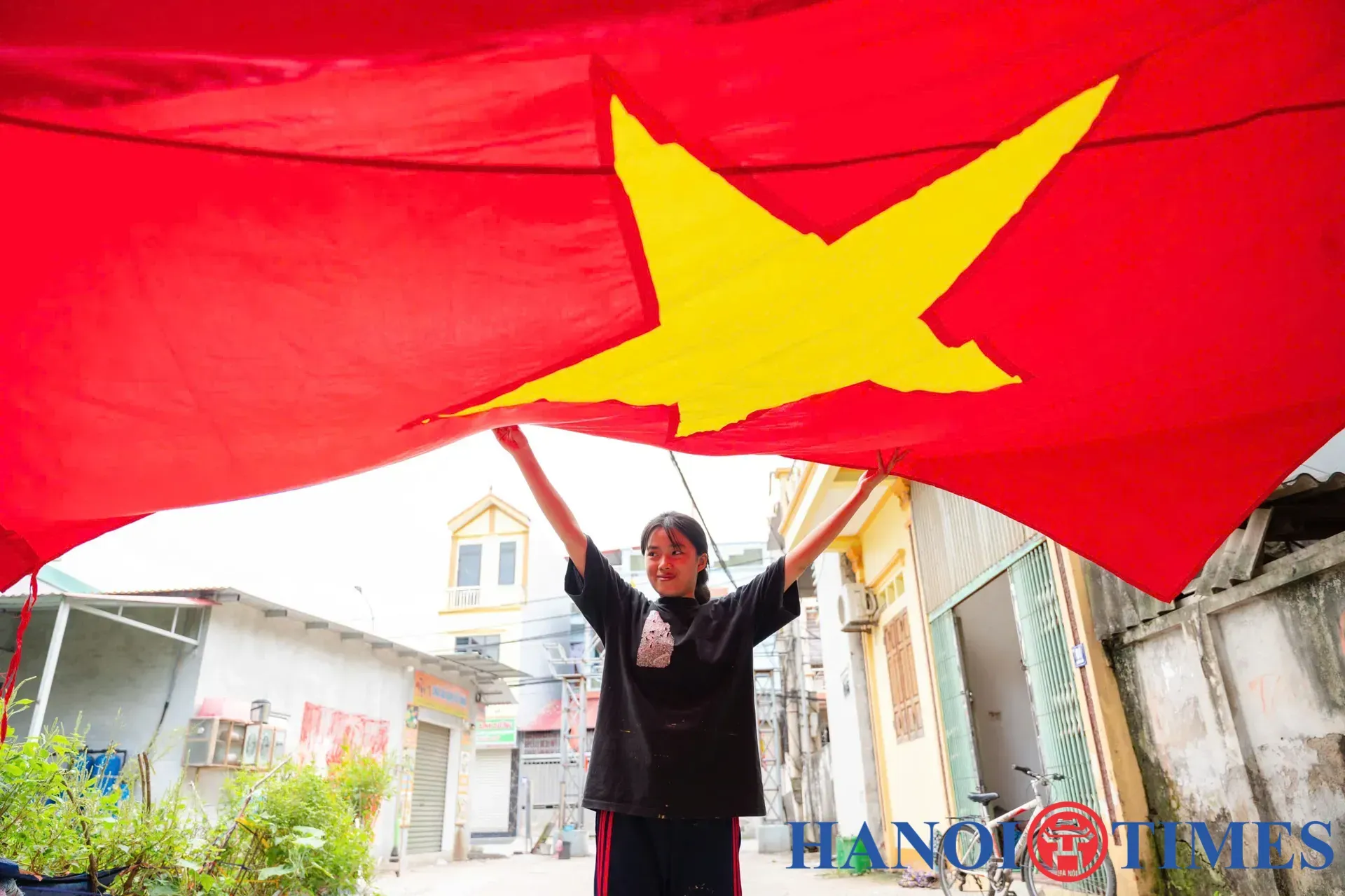
The fabric used for these flags is often sourced from La Khe Village, another heritage site in Hanoi renowned for its weaving and dyeing traditions.
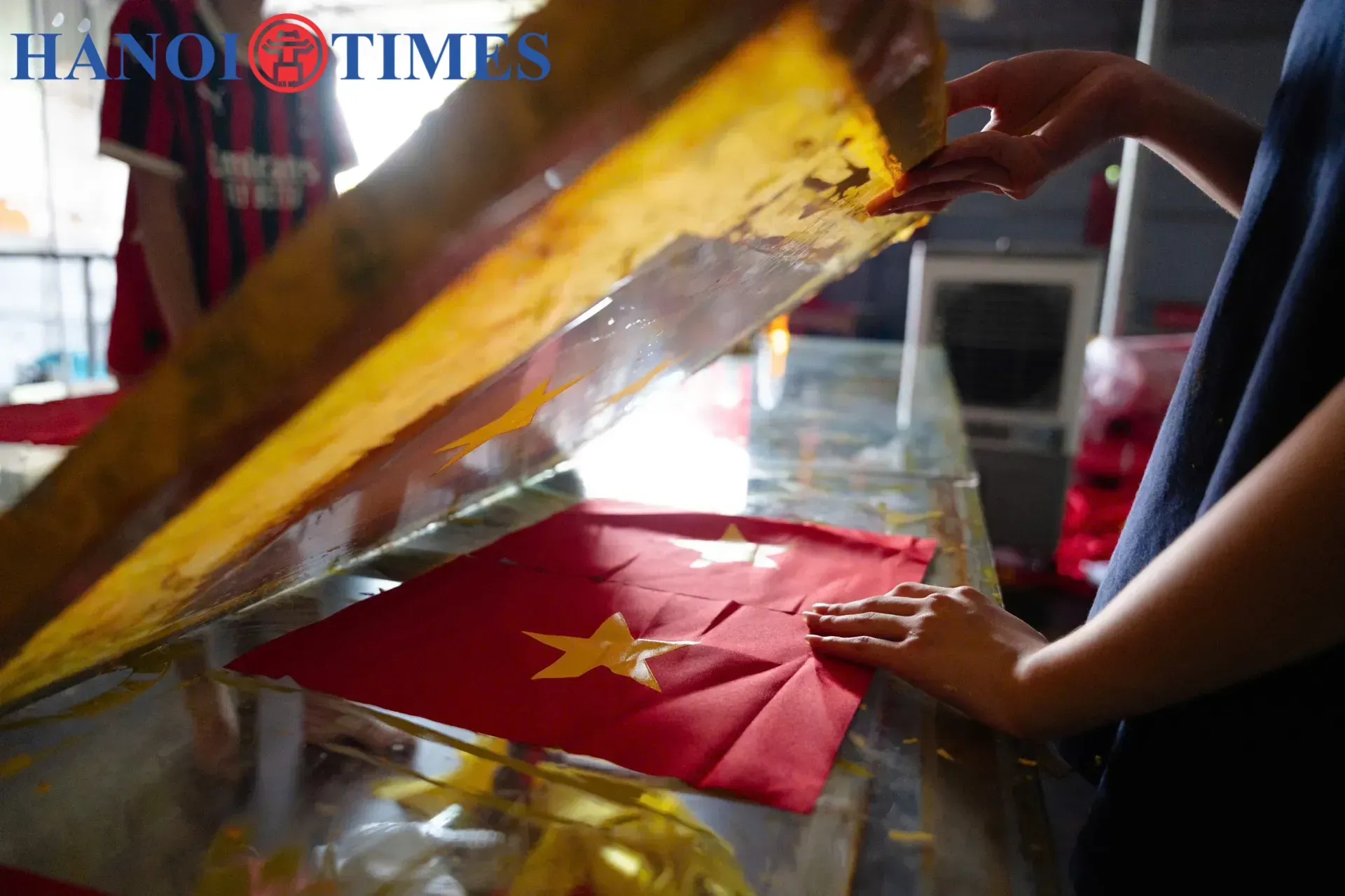
While making national flags may not demand complex techniques, it does require unwavering precision and care, as every flag must meet official standards.
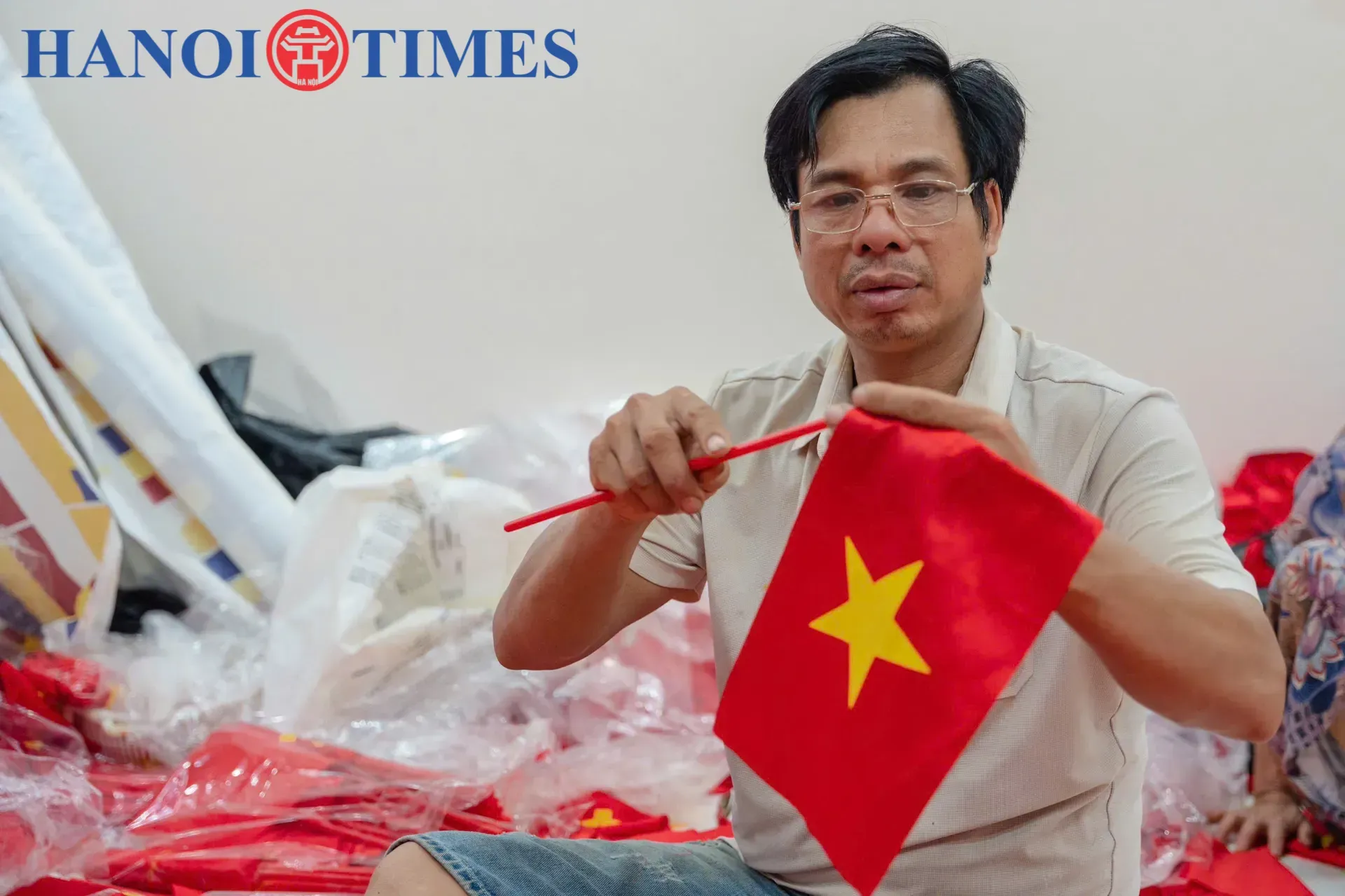
The last stage of making flag.
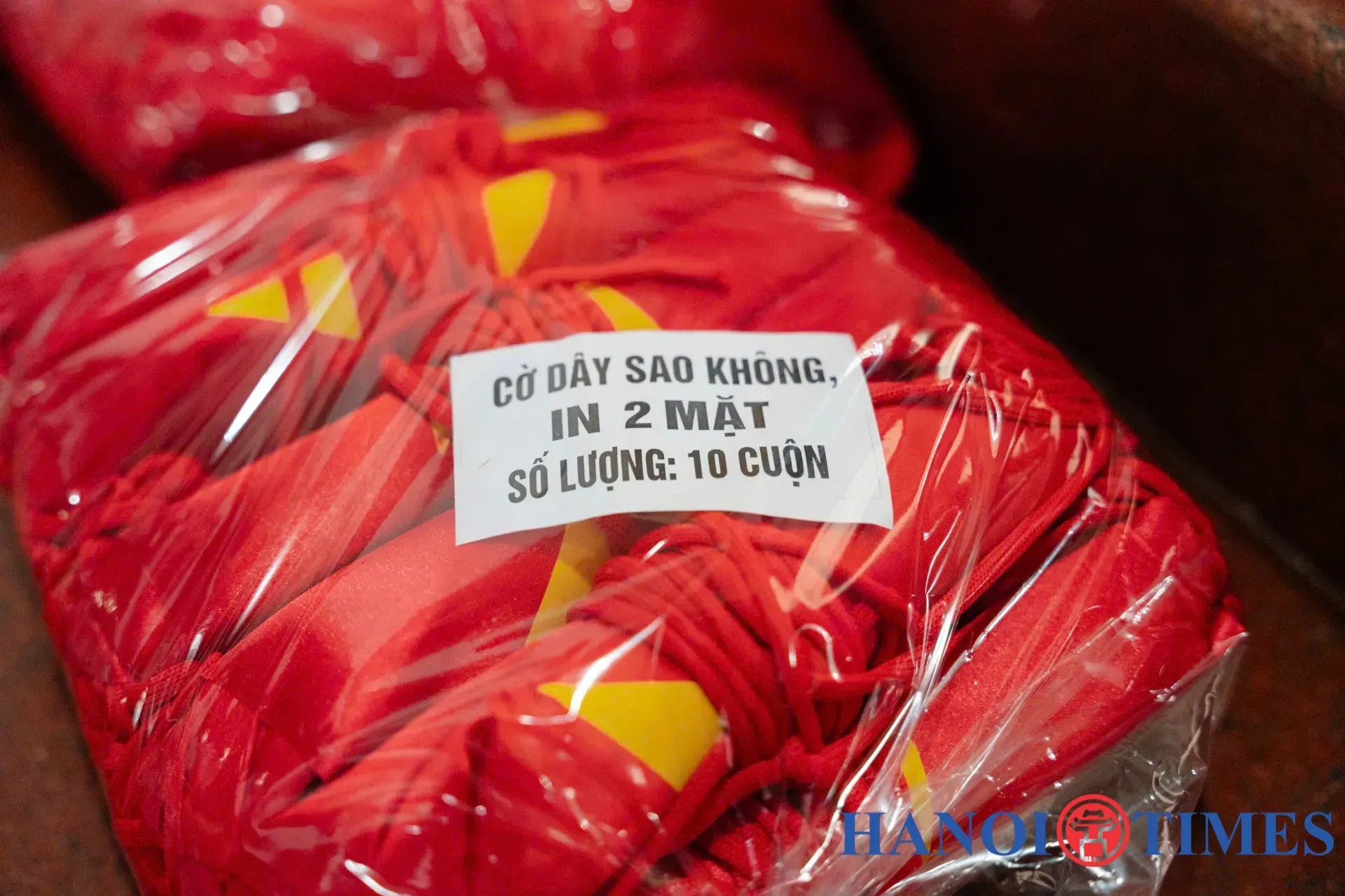
Once completed, the flags are neatly folded, packaged, and sent across the country.
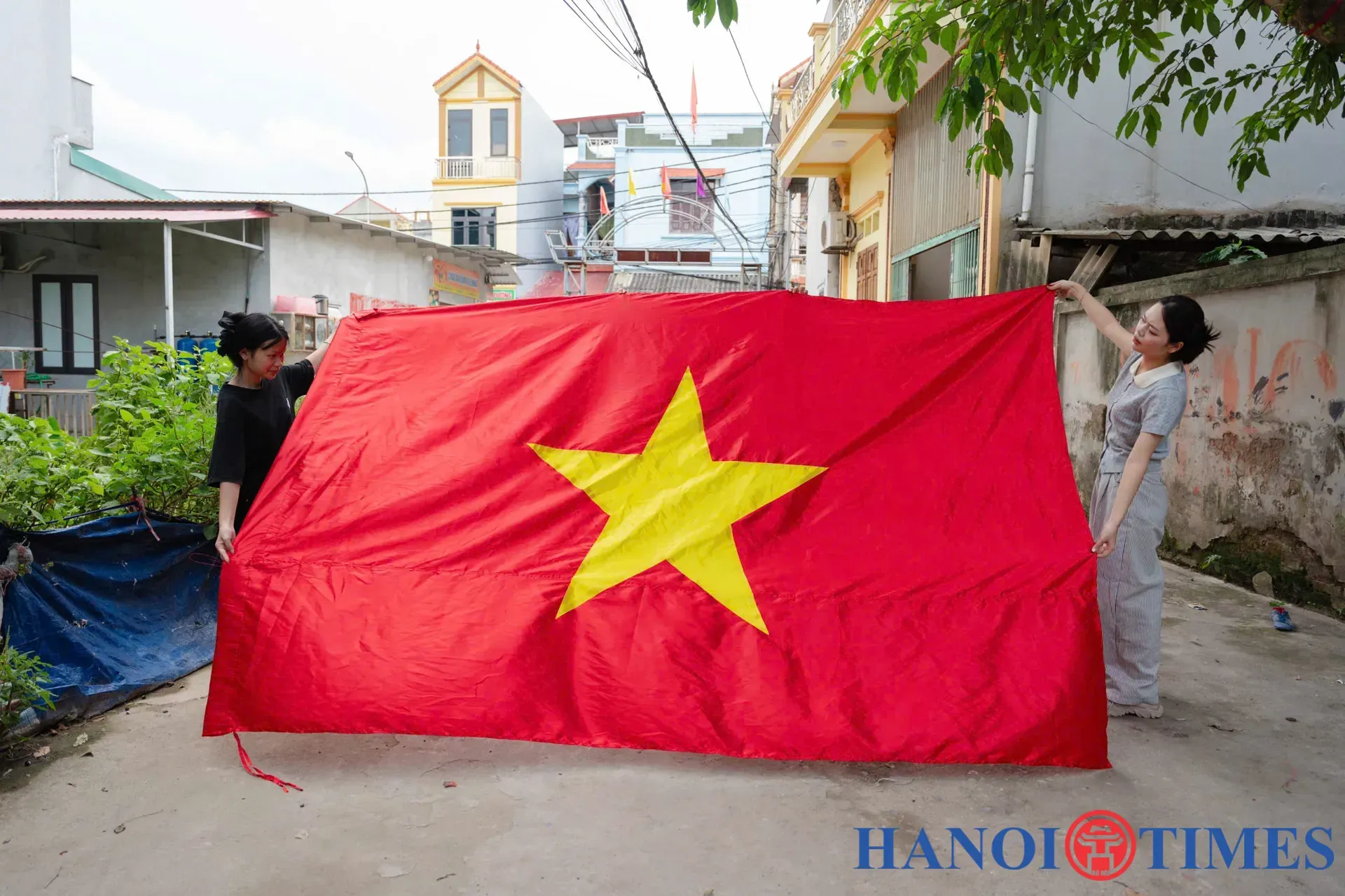
As Vietnam prepares to mark the 80th anniversary of National Day next month, Tu Van’s flags will once again fly over the sky in every corner of the nation.

